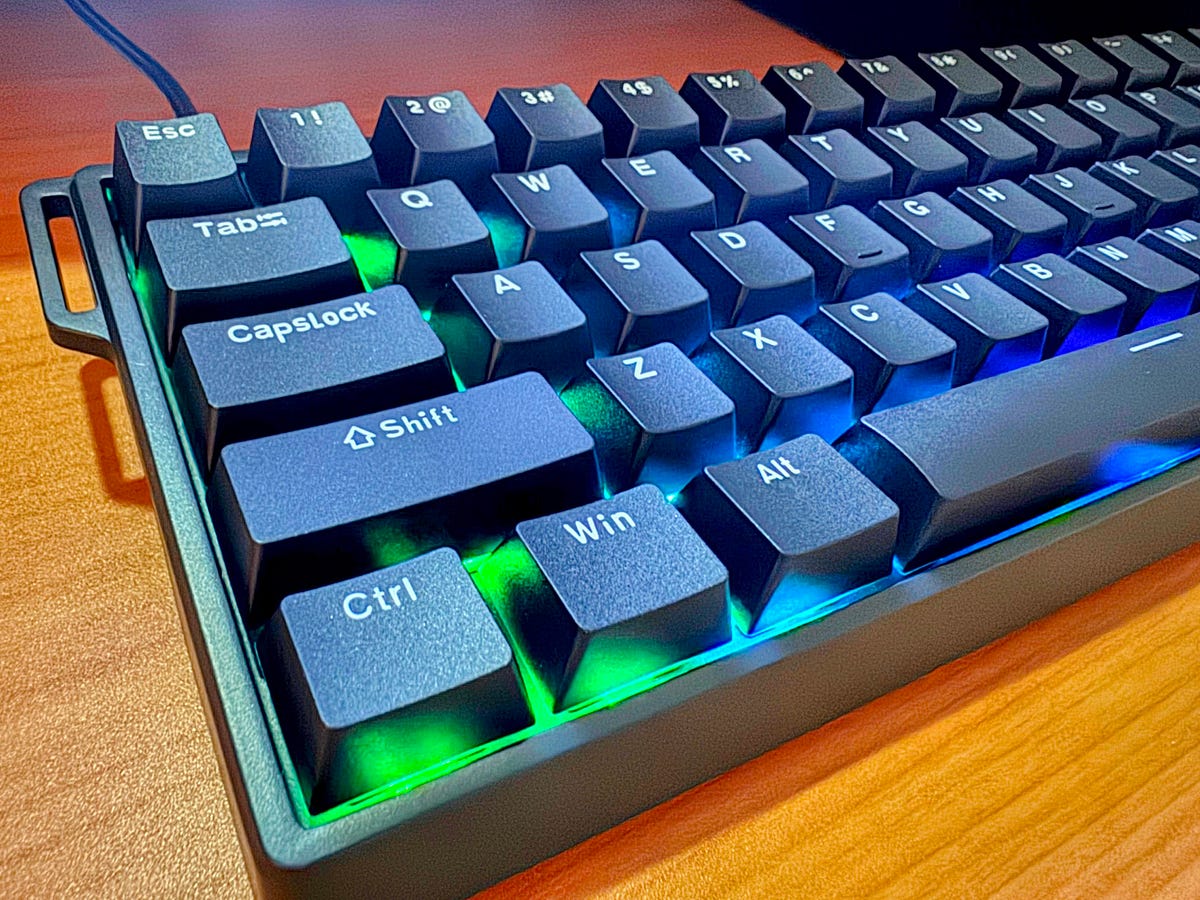Press enter or click to view image in full sizeWhy pay a couple hundred dollars for a keyboard with a weird strap hook on the left side when you could pay much less? Photo taken by the author.
![]()
If you’ve ever strolled into an electronics retailer with a PC gaming keyboard section, you’ve probably seen someone there tapping away at the different demo models, trying desperately to feel a difference.
This is the worst way to test a keyboard, in my opinion. At my local stores, these display models usually aren’t hooked up to anything and are just sitting on random metal shelves. The ones that are out in the open have several key caps missing from customers stealing them, and those that are encased in some kind of security box to prevent said keycap theft are even harder to “test out.” The biggest PC peripheral makers like Razer, Logitech, Corsair, and SteelSeries are all hoping that you’ll feel enough excitement in your quick smooshing of some random keys to fork out the $100-$300 dollars that their premium gaming models go for.
But hammering some keys on a shelf doesn’t represent the experience of gaming or typing at home, and it only really tells you if the core feel of the keyboard has anything to offer. Most of the time, the big gaming models don’t even get that right. They’ll lack foam damping, or gasket mounts, or any sort of lubrication, and they often also use older switch technologies. These premium enthusiast keyboard features don’t actually cost that much to implement, but they would eat into profit margins. Some…

